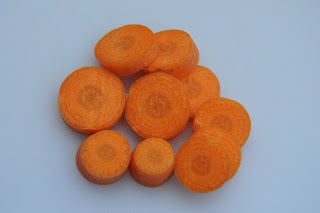The OCA organised study visit to Thomas Struth at the Whitechapel Gallery led to the discovery of a hidden gem – Struth himself.
My first introduction to Struth was of his place in the deadpan aesthetic where art photography is moved outside of the sentimental and subjective and the viewer is faced with the emotional detachment and sometimes clinical command of the photographer.
His work invites us to take pleasure in examining his photographs by not allowing us to immerse ourselves psychologically in his work.
The museum series is what I had seen in books and the advertisement for this exhibition is probably what most people would associate with him. I had also been informed about the size of his pictures – some up to 4 metres long. How can such a vast space be filled and provide satisfaction while remaining devoid of emotional attachment. How does he invite you in and when you are in, what is it that you see and holds your attention? And is this where his work ends with a series of images of people looking at the magnificent works of art in museums and galleries across the world?
Struth is interested in the whole, the global, in line with the beliefs of Gestalt psychology – the whole is greater than the sum of its parts. His work in this exhibition is divided into five areas: Audiences, Streets, Paradise, Families and Buildings.
Audiences – his photographs of visitors to museums tells us a lot about collective cultural behaviour. The Pergamon Museum in Berlin (although staged using extras) gives us an insight into the very individual experiences of the visitors to the historical relics of the past and their visit to the modern gallery experience thus exploring the conflation of time.
The development of city streets is charted in his black and white images of street scenes from New York, Dusseldorf and Paris. These streets are deserted which allows their strong central perspective to become an important feature in his documentation of illustrating locations where a city is at its most ‘condensed.’
Progress through the ages can be seen from the modern perspective in his images of the laboratories and the cutting edge of technology like the Space Centre on Cape Canaveral. Here he uses central perspective to condense the scene to make the space centre feel even smaller considering the huge development it is. I couldn’t help feel lost in these technical images. What is that? I felt a little frustrated by the lack of something to see. In this modern age, the major developments that are shaping our world can’t be seen, unlike those of the period of industrialisation 150 years ago.
The images of wires and the spectrometer further increased my feeling of isolation as the point was proved that this is something I couldn’t understand. However, this is an effective way to present technology that can’t be explained.
Families, although a series of family portraits, was very different to any of his other work but also left you trying to make sense of what you see. The only instructions given by Struth to his subjects was to look into the camera. They could organise themselves any way they chose. This made the viewer question more about the people in the frames, who they were and why they chose to present themselves in the way they did.
Paradise consists of a series of pictures taken in jungles across the world – a collection of ‘unconscious places’. These places do not need to be read or interpreted – they emphasise the viewer’s presence and their sense of self.
The Paradise series is one where the sheer size of the prints is important. Having viewed the images online before the visit I found it hard to see what they were about. However. If you are to take a moment to look deep into oneself you need to have the jungle big enough to do so.
There is no vanishing point in some of these images so there is no focus – just the viewer and the jungle in a unique viewing experience.
Struth’s work varies across his career from the black and white images of city streets to the colour rich jungles in Paradise, however there is central themes that are consistently explored and questioned. His images carry the cultural, historical and psychological structures at work in the modern world. Time, perspective and detachment are important as well as size, colour and our ability to see when sometimes seeing requires a different sort of vision.



























